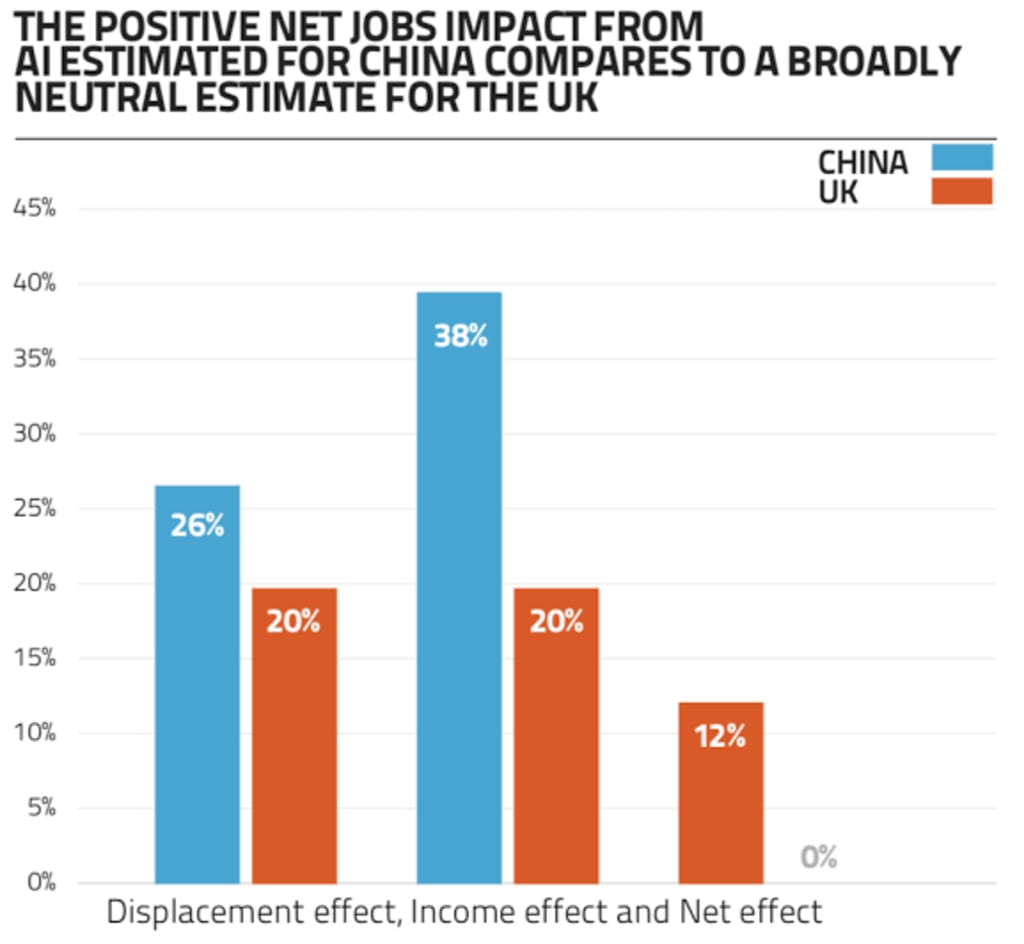The impact of artificial intelligence on the workforce and job market
impact of AI on job market

I. Introduction
Brief overview of the topic:
Artificial intelligence (AI) has the potential to greatly impact the workforce and job market, both positively and negatively. On one hand, AI has the ability to increase productivity and efficiency, create new jobs in the technology industry, improve decision-making, and automate repetitive tasks. On the other hand, AI can lead to job displacement and unemployment, increased income inequality, lack of accountability and transparency in AI-driven decision-making and potential for bias and discrimination in AI systems. The future of work and AI is a complex and multifaceted topic that requires ongoing discussion and research to understand the full implications and find a balance between the benefits and drawbacks of AI in the workforce and job market.
SIGNIFICANCES:
The significance of artificial intelligence (AI) on the workforce and job market lies in the fact that it has the potential to greatly change the way we work and the types of jobs that are available. As AI technology continues to advance and become more prevalent in various industries, it is likely to automate many tasks and processes that are currently done by human workers. This could lead to increased productivity and efficiency, but also job displacement and unemployment.
Furthermore, AI has the potential to create new jobs in the technology industry, such as data scientists, AI engineers, and AI analysts, but also new skills are required for the existing jobs. AI can also change the nature of the jobs, for example, personalizing customer service, but it also could lead to a lack of accountability and transparency in AI-driven decision-making.
It is important to understand the potential impact of AI on the workforce and job market in order to prepare for and mitigate any negative effects, while maximizing the benefits. This may involve government policies and regulations, re-skilling and up-skilling programs for workers, and continued research and discussion on the topic.
Thesis statement: Artificial intelligence has the potential to greatly impact the workforce and job market, both positively and negatively.
II. Positive impacts of AI on the workforce and job market
There are several positive impacts that artificial intelligence (AI) can have on the workforce and job market. Some of these include:
Increased productivity and efficiency: AI can automate repetitive tasks and processes, freeing up human workers to focus on more complex and value-adding activities. This can result in increased productivity and efficiency, as well as cost savings for businesses.
Creation of new jobs in the technology industry: As AI technology becomes more prevalent, there will be a growing demand for professionals with skills in areas such as data science, machine learning, and AI engineering. This can lead to the creation of new job opportunities in the technology industry.
Improved decision-making: AI can analyze large amounts of data and identify patterns and insights that humans may not be able to see. This can lead to improved decision-making in areas such as finance, healthcare, and marketing.
Personalization of customer service: AI-powered chatbots and virtual assistants can provide personalized customer service 24/7, improving customer satisfaction and loyalty.
Automation of repetitive tasks: AI can automate repetitive tasks such as data entry, customer service, and scheduling, which can free up time for employees to focus on more important tasks.
Improved predictions: AI can analyze data and make predictions about future trends and behaviors, helping businesses to make better decisions and optimize operations.
Cost reduction: AI can help businesses to reduce costs by automating repetitive tasks and making predictions about future trends and behaviors.
III. Negative impacts of AI on the workforce and job market
There are several negative impacts that artificial intelligence (AI) can have on the workforce and job market. Some of these include:
Job displacement and unemployment: AI has the ability to automate many tasks and processes that are currently done by human workers. This can lead to job displacement and unemployment, particularly in industries that rely heavily on manual labor or repetitive tasks.
Increased income inequality: As AI takes over many tasks and processes, there may be a shift towards a "winner takes all" economy where a small group of highly-skilled workers are able to command high salaries, while many others struggle to find work.
Lack of accountability and transparency in AI-driven decision-making: AI systems can be opaque and difficult to understand, making it hard to determine how decisions are being made and who is responsible for any errors or biases that may occur.
Potential for bias and discrimination in AI systems: AI systems are only as unbiased as the data they are trained on. If the data is biased, the AI system will also be biased, this can lead to discrimination and unfair treatment.
Dependency on AI: As AI becomes more prevalent in the workforce and job market, there is a risk of becoming too dependent on it, which can lead to lack of critical thinking and problem-solving skills among human workers.
Loss of human touch: AI can automate many tasks, but it lacks the ability to empathize, to understand emotions, and to make decisions based on experience and intuition. This can lead to a loss of human touch in certain jobs and industries, resulting in a less personal and less satisfying customer experience.
Job polarization: AI can automate repetitive tasks and processes, which can lead to job polarization, where low-skilled jobs are replaced by machines, but also high-skilled jobs are at risk, as AI can substitute them too.
IV. The future of work and AI
The future of work and artificial intelligence (AI) is a complex and multifaceted topic that will likely continue to evolve as technology advances. Some potential developments in AI and their potential effects on the workforce and job market include:
Advancements in natural language processing (NLP) and computer vision: These developments could lead to the automation of jobs that involve communicating with customers and analyzing visual data, such as customer service representatives and data analysts.
Increased use of AI in decision-making and problem-solving: As AI becomes more sophisticated, it could be used to make decisions and solve problems in a wide range of industries, potentially leading to the displacement of jobs that involve decision-making and problem-solving.
Development of AI-powered robots and autonomous vehicles: These technologies could lead to the automation of jobs that involve physical labor, such as manufacturing and transportation.
The emergence of AI-powered virtual assistants: These technologies could lead to the automation of jobs that involve scheduling and coordination, such as administrative assistants.
The growth of AI-powered industries: AI technology is expected to create new industries and job opportunities in areas such as data science, AI engineering, and AI ethics.
It's important for workers to adapt to the changing job market by re-skilling and up-skilling to stay relevant in the future of work. Also, government policies and regulations play an important role in addressing the negative impacts of AI on the workforce and job market, and help to ensure that the benefits of AI are shared equitably.
Potential developments in AI and their potential effects on the workforce and job market
The importance of re-skilling and up-skilling for workers to adapt to the changing job market
The need for government policies and regulations to address the negative impacts of AI on the workforce and job market
V. Conclusion
Summary of the main points discussed in the article
The need for ongoing discussion and research on the impact of AI on the workforce and job market
The importance of finding a balance between the benefits and drawbacks of AI in the workforce and job market.
About the Creator
Enjoyed the story? Support the Creator.
Subscribe for free to receive all their stories in your feed. You could also pledge your support or give them a one-off tip, letting them know you appreciate their work.





Comments
There are no comments for this story
Be the first to respond and start the conversation.